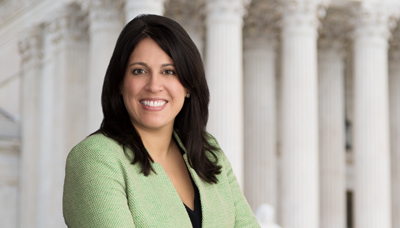Have you ever read a full set of jury instructions for a criminal trial, let alone a civil trial? What about just one instruction for one element of a crime? Can you recall Jack McCoy ever reciting the law to the jury in a closing argument on “Law and Order?” Jury instructions are a powerful tool and can play a vital role in communicating your client’s case to the jury. The key is making the instructions simple, concise and in plain English. Far too often lawyers miss the opportunity to advocate for their clients and communicate with the jury – through the most powerful medium, the Court - simply because they fail to advocate for simpler, easier to understand jury instructions. The education level of any given juror can vary widely depending on the jurisdiction but one thing always remains the same – their short attention spans. Most model jury instructions tend to be long, complex, and rambling sentences that would lose anyone. And, of course, there are some jury instructions like “burden of proof,” that are such boilerplate instructions it is not worth the effort to persuade the judge to change even a word of the instruction. So in addition to being clear and concise, you must pick the right instructions that will convey your client’s message, trial theme or defense to the jury. Last fall, Barnes & Thornburg clients Tokai Kogyo Ltd., a Japanese auto parts manufacturer and its U.S. subsidiary, Green Tokai Co. Ltd., located in Brookville, Ohio went to trial against the U.S. government to defend against allegations that the companies conspired with other manufacturers of auto body sealing parts to fix prices in violation of the Sherman Act. The government’s alleged proof, however, was almost entirely based on events and actions that occurred in Japan, not the United States. The government had a few documents but the lynchpin of its case was the testimony of the immunized witnesses. To complicate matters, the witnesses were not native English speakers so they testified in Japanese then had their testimony translated into English. A tried and true defense tactic is to attack the credibility of an immunized witness and expose their motivations for testifying to the members of the jury. So in our opening statement, we told the jury that the government was not seeking truth and justice with its prosecution and that the only “truth” they would hear from the cooperating witnesses was the government’s version of the truth. Following our opening statement and prior to calling the immunized witnesses, the Court read an immunity instruction requested by the government which was supposed to highlight for the jury that the testifying witnesses still faced some threat of prosecution by the government. On direct, the prosecution ended its questioning of each witness with the following question: “Why did you travel here to the United States today?” Each witness answered, “I came here because I wanted to tell the truth, as I knew, without delay, in regards to the customers and sales activities.” Then during cross-examination, the witnesses were questioned about their immunity, their non-prosecution agreements with the government, their invocation of their Fifth Amendment rights, and their fear of future of prosecution. But all of them were confused about these U.S. Constitution-based rights and none of them feared future prosecution for their crimes of price fixing or obstruction of justice. Based on the testimony we elicited at trial and the previous immunity instruction the government requested be read to the jury, we argued that the Court and the jury had been misled by the government because the witnesses had no real fear of prosecution. The witnesses had testified before the jury that they had only come to the United States to “tell the truth” but in reality, they had come to the United States because they had been required to do so in order to avoid prosecution completely. Therefore, we proposed that the judge add the following language to the immunity instruction previously given to the jury: It is in the discretion of the government to determine, in good faith, whether any of these witnesses have violated the September 2016 agreement.
The government is permitted to make these types of promises and agreements with witnesses. But you should consider the testimony of those witnesses […] with more caution than testimony of other witnesses. Consider whether their testimony may have been influenced by the government’s promises. You are not to convict the defendants based on the unsupported testimony of such a witness, standing alone, unless you believe his testimony beyond a reasonable doubt. The government initially objected but then relented after it was apparent that the judge was going to allow the jury instruction. Then, in closing arguments, we reiterated to the jury what the judge had already told them – that they needed to consider the testimony of the immunized witnesses with great caution because their testimony had been influenced by the government’s promise to never prosecute those witnesses for their crimes. These simple, concise instructions along with our presentation of key, material facts regarding the innocence of both Defendants was essential to obtaining acquittals for Tokai Kogyo and Green Tokai. In short, when it comes to instructing a jury, you may be better served to simply keep it “short and sweet.”
Don’t Overthink It! Advocate for Easy to Understand Jury Instructions to Effectively Communicate Your Case
Subscribe
Do you want to receive more valuable insights directly in your inbox? Visit our subscription center and let us know what you're interested in learning more about.
View Subscription Center











